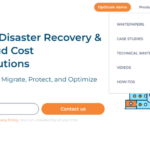The landscape of office rentals is undergoing a significant transformation. Traditionally, office rentals involved long-term leases for static spaces, often with limited flexibility to adapt to changing business needs.

However, in recent years, the rise of remote work, flexible working arrangements, and the need for more dynamic and responsive work environments have driven a shift in how businesses approach office space.
The evolution of office rentals
Historically, office rentals were characterized by rigid, long-term leases that tied businesses to fixed spaces, often for several years. This model was suitable for an era when business operations were more predictable, and the workforce was primarily office-based.
However, the advent of digital technologies, changing work patterns, and the need for greater agility have altered these requirements.
The needs of businesses have evolved dramatically. Companies now seek spaces that can quickly adapt to growth, downsizing, or changes in work style. The demand for flexibility, cost-efficiency, and environments that foster creativity and collaboration has led to a reevaluation of traditional office rentals.

Today’s businesses prioritize workspaces that offer both physical and operational flexibility, supported by the latest technological innovations.
Tech innovations in workspace solutions
Smart office technology
Smart office technology refers to the integration of IoT (Internet of Things) devices and automated systems to create more efficient and responsive work environments. Examples include:
- IoT Devices: Sensors and devices that monitor and control lighting, heating, and air conditioning, creating energy-efficient and comfortable workspaces.
- Automated Systems: Systems that manage everything from room bookings to security, ensuring seamless operations and enhanced productivity.
Virtual and augmented reality
Virtual Reality (VR) and Augmented Reality (AR) are revolutionizing office design and collaboration:
- Office Design: VR allows businesses to visualize and design office spaces before they are built, ensuring optimal layout and functionality.
- Remote Collaboration: AR can enhance remote meetings by overlaying digital information onto the physical world, making virtual collaboration more interactive and effective.
Cloud computing and connectivity
Cloud computing has transformed how businesses operate, particularly in terms of remote work and flexible office arrangements:
- Remote Work: Cloud-based tools and platforms enable employees to access information and collaborate from anywhere, facilitating a more distributed workforce.
- Flexible Arrangements: High-speed connectivity and cloud services support the seamless integration of in-office and remote work, providing the flexibility that modern businesses require.
Artificial Intelligence and Machine Learning
AI and machine learning are enhancing office management and efficiency in several ways:
- Office Management: AI-driven systems can optimize space utilization, predict maintenance needs, and manage resources more effectively.
- Efficiency Enhancements: Machine learning algorithms can analyze work patterns and suggest improvements, boosting overall productivity and operational efficiency.

Flexible workspaces: A new era
The concept of flexible workspaces has gained significant traction in recent years. This rise is largely due to the evolving needs of modern businesses, which demand agility and adaptability in their work environments.
Flexible workspace solutions offer a range of options, including co-working spaces, serviced offices, virtual offices, and hybrid workspaces, catering to businesses of all sizes and industries.
Flexible workspaces, often described as workspaces that work for you, provide numerous advantages. They offer businesses the ability to scale their operations up or down without the constraints of long-term leases.
This flexibility is crucial for startups and growing companies that may need to adjust their space requirements frequently. Also, these workspaces foster a collaborative environment, allowing businesses to network and share resources with other like-minded companies.

Benefits of tech-driven workspaces
#1 Improved productivity and efficiency
Tech-driven workspaces enhance productivity and efficiency by integrating advanced tools and systems.
Automated lighting, climate control, and smart office management systems ensure that the workspace operates smoothly, allowing employees to focus on their tasks without unnecessary distractions.
#2 Enhanced employee satisfaction and well-being
Modern workspaces equipped with the latest technology contribute to employee satisfaction and well-being.
Features such as ergonomic furniture, wellness rooms, and smart health monitoring systems create a comfortable and healthy work environment. Employees who feel valued and supported are more likely to be productive and engaged.

#3 Cost savings and scalability for businesses
Flexible, tech-driven workspaces offer significant cost savings and scalability. Businesses can avoid the high costs associated with traditional office setups, such as long-term leases and extensive infrastructure investments.
The ability to scale the workspace up or down based on current needs ensures that businesses only pay for the space they use.
#4 Sustainability and eco-friendly solutions
Sustainability is a growing concern for many businesses, and tech-driven workspaces can contribute to eco-friendly operations.
Energy-efficient systems, smart waste management, and sustainable building materials reduce the environmental impact of office spaces. These practices not only benefit the planet but also enhance the company’s reputation and appeal to environmentally conscious clients and employees.
Challenges and considerations
While tech-driven workspaces offer many benefits, they also come with challenges and considerations. One potential drawback is the initial investment required for advanced technology and smart systems.
Businesses must address security and privacy concerns associated with the increased use of connected devices and cloud-based services.

Balancing technology with human elements in the workplace is another important consideration. While technology can enhance productivity, it is essential to maintain a human-centered approach that prioritizes employee well-being and fosters a positive work culture.
Ensuring that employees have access to personal interactions and a supportive work environment is crucial for long-term success.
Future trends in workspace technology
The next decade is poised to bring even more innovations in workspace technology. Predictions include the continued rise of hybrid work models, with businesses increasingly adopting flexible workspaces that support both in-office and remote work.
Emerging technologies such as artificial intelligence, machine learning, and advanced data analytics will play a significant role in creating more efficient and personalized work environments.
Smart offices equipped with IoT devices, automated systems, and AI-driven space management will become more common, offering enhanced efficiency and comfort. Remote collaboration tools will continue to evolve, providing seamless integration between in-office and remote employees.

Flexible lease models and innovative workspace solutions will cater to the dynamic needs of growing businesses, offering more adaptability and resilience.
As businesses navigate these changes, it is essential to embrace technology while maintaining a focus on creating workspaces that support employee well-being and productivity.










Leave a Reply